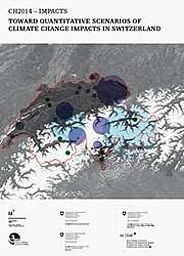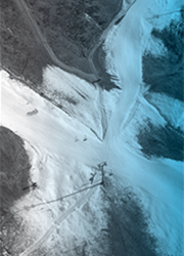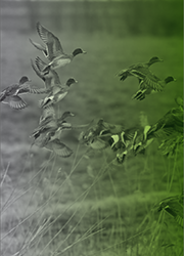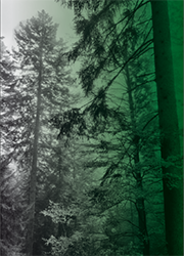Southern Switzerland emerges as a hotspot of the effects of climate change. And the bark beetle is putting spruces all over Switzerland under increasing pressure, because an additional generation of pests could hatch each year due to the rising temperatures. These are two of many statements from the report «CH2014-Impacts», which deals with the quantitative consequences of climate change for Switzerland. It has been produced under the direction of the Oeschger Center for Climate Change Research of the University of Bern.

More than 20 research groups from all over Switzerland - including the Swiss Federal Institute for Forest, Snow and Landscape Research WSLand the WSL Institute for Snow and Avalanche Research SLF - have worked on the climate change impacts report during the past two years. The unprecedented project was initiated and coordinated by the Oeschger Center of the University of Bern; it was financially supported by the Federal Office for the Environment (BAFU) and MeteoSchweiz. In its investigations into seven subject areas – from glaciers and water balance to woods, biodiversity and agriculture to health and energy – the researchers took the so-called «CH2011 Scenarios» as their starting point for the future development of temperature and precipitation in Switzerland. From these climate scenarios they derived concrete impacts. With this uniform basis the numerous research groups were able to feed the same data into their models and thus make the results comparable. «This approach provides valuable foundations for the development of adaptation strategies», says Christoph Raible from the Oeschger Center for Climate Change Research of the University of Bern, which coordinated the project.
Reseachers from WSL and SLF are leading authors of the three following subjects.

Cryospheric aspects of climate change – impacts on snow, ice, and ski tourism
Lead author: C. Marty, SLF
Unless radical climate policy measures are implemented, it must be assumed that by the end of this century snow cover on the central plateau will only rarely last for several days. At the same time, both the duration of snow cover and the volume of snow water in the Alps look set to fall dramatically. As a result, future ski tourism will become even more dependent on artificial snow-making than it is today. Analyses show that higher altitude zones will only manage to retain their competitive advantage in the long run if more decisive climate protection measures are taken. By the end of the century, the smaller quantities of snow and more widespread melting of ice are likely to cause a 90% decline in overall glacier volume, with the remaining 10% persisting only above an altitude of 3,000 m. Furthermore, as temperatures rise the permafrost will start to melt, and in places disintegrate, which could cause new problems.

Impacts on the biodiversity of widely distributed birds and vascular plants: species richness and turnover
Lead authors P. B. Pearman, SLF & N. E. Zimmermann, SLF
Articles on 'CH2014 impacts' by researchers at the WSL Institute for Snow and Avalanche Research (SLF) and the University of Lausanne suggest that the diversity of widely distributed bird and plant species will change markedly throughout Switzerland by the end of the 21st century. So-called 'species turnover' – a change in the composition of a biological community resulting from the migration or local extinction of species – will be noticeable both at lower altitudes and in mountainous regions. However, the biggest changes will take place in higher altitude zones, at around 2,000 m. It is important to identify which species and plant communities provide important ecosystem services, such as recovery, or valuable raw materials, so that biodiversity can be fostered in a targeted way.

Climate change impacts on tree species, forest properties, and ecosystem services
Lead authors: H. Bugmann, ETH Zurich & P. Brang, SLF
Articles on 'CH2014 impacts' by researchers at the SLF, ETH Zurich and University of Bern paint a varied picture of the future awaiting our forests, predicting that many trees at low altitudes will suffer increasingly from drought stress. Today's widespread spruce and beech trees on the Swiss plateau look set to come under mounting pressure, thrive less and could even die in an extreme drought. For the spruce trees this also increases the risk of bark beetle infestation. In high altitude zones the picture is different: the trees there are expected to benefit from the higher temperatures and thrive better, causing the forests to spread and densify. This will result in a conflicting trend in ecosystem services like timber production, carbon sequestration and rockfall and avalanche protection, with services deteriorating at lower altitudes and improving at higher altitudes. And although major changes are only forecast for towards the end of the century, the silviculture industry must already start making provisions for such an eventuality today when rejuvenating forests, tending young trees and thinning out existing growth.
Contact
Copyright
WSL und SLF stellen Bildmaterial zur Bebilderung von Presseartikeln im Zusammenhang mit dieser Medienmitteilung kostenfrei zur Verfügung. Eine Übernahme der Bilder in Bilddatenbanken und ein Verkauf der Bilder durch Dritte sind nicht gestattet.
Links and documents
Report "CH2014-Impacts"
The report «CH2014-Impacts» can be downloaded free of charge at www.ch2014-impacts.ch. As well as the complete report («CH2014-Impacts - Toward Quantitative Scenarios of Climate Change Impacts in Switzerland») there are summaries in German, French and Italian.